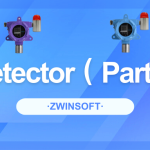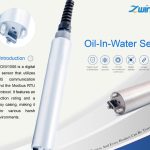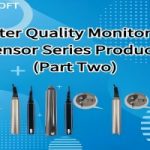Water quality monitoring is a critical measure for ensuring water resource security and promoting environmental sustainability. Its importance has become increasingly prominent against the backdrop of global population growth and accelerated industrialization. Currently, water resources are under unprecedented pressure, and deteriorating water quality poses severe challenges to human health and ecosystems. In this context, establishing an accurate water quality monitoring and evaluation system to enable rapid identification and resolution of pollution issues has become a core topic in water resource management and sustainable development.
Traditional water quality monitoring methods primarily rely on manual sampling and laboratory analysis, which have significant limitations: first, the operational process is cumbersome and consumes considerable human and material resources; second, the monitoring frequency is limited, resulting in poor data timeliness and difficulty in providing timely warnings of potential risks; third, the sampling scope is restricted, making it challenging to achieve comprehensive monitoring of large-scale water bodies. These shortcomings render traditional methods inadequate to meet the precision requirements of modern water environment management.
With the innovative development of smart sensor technology, the field of water quality monitoring is undergoing a major transformation. This technology integrates advanced microelectronics, communication, and computer technologies, achieving three breakthroughs: first, it enables round-the-clock continuous monitoring, ensuring real-time data; second, it offers higher measurement accuracy, guaranteeing data reliability; third, it supports intelligent functions such as online monitoring, automatic data collection and processing, and remote transmission and sharing. These technological advancements bring new opportunities for the water quality monitoring industry while also demanding upgrades and transformations of traditional monitoring models.
Advantages of Smart Sensor Technology in Water Quality Monitoring:
1.Real-Time Monitoring and Sharing
Smart sensors are equipped with microprocessors that enable real-time processing and analysis of collected data. They can communicate with other devices or systems via wired or wireless methods, allowing real-time viewing of key indicators such as pH, dissolved oxygen, and temperature.
2.Large-Scale Deployment
Using wireless communication technology, numerous smart sensor nodes can be interconnected to form a wide-coverage sensor network.
3.Data Accuracy
The automatic calibration technology of smart sensors reduces inherent errors, thereby improving the accuracy of monitoring results.
4.Low Power Consumption
By incorporating low-power components and optimizing power management circuits and clock systems, smart sensors minimize their energy consumption.
5.Efficient Early Warning and Emergency Response
Smart sensors employ advanced data analysis algorithms and models to perform real-time analysis based on predefined rules and threshold values.
Recommended Water Quality Monitoring Sensors by Tianjin Zwinsoft Technology Co., Ltd.:
1.pH Sensor

The digital pH sensor is used to accurately measure the pH value of a solution, indicating its acidity or alkalinity. Based on a glass electrode, it provides precise pH measurements, typically with an accuracy of ±0.01 pH units. The sensor outputs digital signals and features a built-in temperature sensor, ensuring excellent stability and repeatability.
2.Dissolved Oxygen Sensor

The digital dissolved oxygen sensor measures the concentration of dissolved oxygen in water samples. It operates on an electrochemical principle, using a platinum electrode for the reduction reaction of oxygen molecules. The current generated during this reaction is measured to determine the dissolved oxygen concentration.
3.Conductivity Sensor

The digital conductivity sensor measures the conductivity of a solution or water. It works based on the conductive ability of ions in the solution. When current passes through the solution, ion movement generates conductivity. Conductivity is proportional to the concentration and type of ions in the solution. The sensor includes a built-in temperature sensor to automatically adjust measurements for temperature compensation.
4.Turbidity Sensor

The digital turbidity sensor measures the concentration of suspended particles in water samples, which may include sediment, microorganisms, algae, or other organic or inorganic substances affecting water clarity. It operates on the light scattering principle. The sensor emits light through the water sample, and suspended particles scatter the light. The turbidity is calculated by measuring the intensity of the scattered light.
 Tianjin Zwinsoft Technology Co., Ltd
Tianjin Zwinsoft Technology Co., Ltd



![[Case Study of Water Quality Online Monitoring System] [Case Study of Water Quality Online Monitoring System]](https://fr.zwinsoft.com/wp-content/uploads/2025/12/微信图片_2025-12-22_095808_084-副本-150x150.png)

您好!Connectez-vous